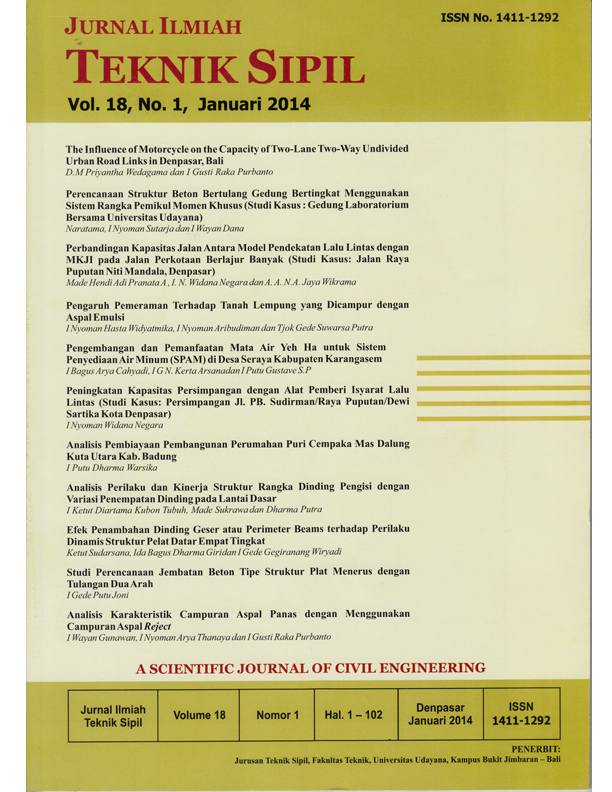BEHAVIOR AND PERFORMANCE ANALYSES OF INFILLEDFRAME STRUCTURE WITH INFILL-WALLS PLACEMENT VARIATION AT THE GROUND FLOOR
Abstract
Abstract: Behavior analysis and performance evaluation of frame structures with infilled wall (RDP) has been done by making four structure models, a model of open framework (MOF) and three RDP models (M1, M2, and M3). In the RDP models, walls in transverse direction of the building was placed fully on the floor 2, 3 and 4, and varied on the ground floor. The wall in longitudinal direction, however, was not included in the model because of the holes and irregularity. The walls on the ground floor were placed fully for M1, at the ends and middle of the building for M2, and none for M3. The walls were modeled as 3 diagonal struts that can withstand compressive stress only. The behavior of the structure was observed through linear elastic analysis by comparing story drift and its ratios, while the performance of the structure was evaluated through nonlinear static Pushover analysis using SAP2000. The analysis showed that the inclusion of infill walls in the model increases the stiffness of the structure. The values of drift at roof level were 8 mm, 10 mm, 12 mm and 28 mm for M1, M2, M3, and MOF, respectively. Soft story mechanism was detected in the RDP models with irregular wall placement with maximum drift ratio of 157% and 249% for M2 and M3, respectively, while MOF and M1 with continuous wall have drift ratios of 101% and 92%. Discontinuous walls also decrease performance of the structure. Pushover analysis results in the transverse direction showed that M1 is capable of resisting the largest base shear force 658 tons with a level of performance Operational (O), while M2 with O performance levels capable of resisting base shear of 437 tons. M3 and MOF can resist the lowest base shear force of 270 tons and 279 tons with performance level of Immediate Occupancy (IO) and Life Safety (LS). Pushover analysis in the longitudinal direction of the building (where the wall was not modeled) showed that, MOF can resist the least base shear compared to the three RDP models. This suggests that the struts on the transverse direction also affect the stiffness of the structure in the longitudinal direction. The actual value of ductility in the transverse direction of the structure are 4.6; 2.9; 2.8; 3.4; for MOF, M1, M2 and M3, respectively. While in the longitudinal direction the ductility are 3.2; 3.6; 3.8; 3,9. All models ductility values are smaller than the design value, i.e., µ = 5.





